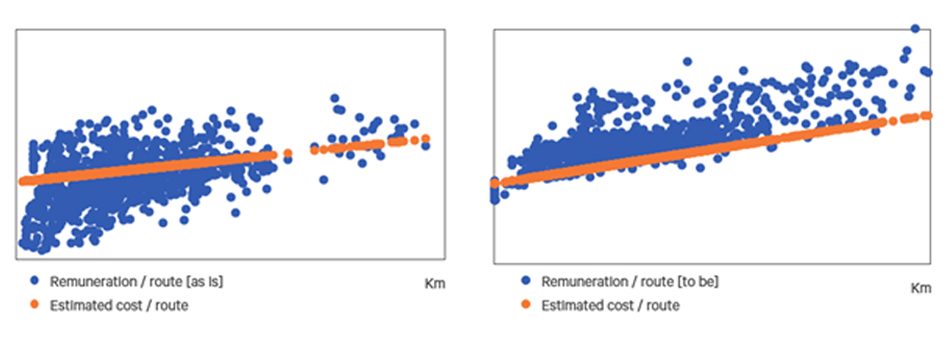This past decade has seen several industries’ activity consolidating around a small number of larger players whose myopic view of supply chain and increased bargaining power made hard for small companies to stay in business. Our client operates in the Fast-Moving Consumer Goods industry, having a wide range of small carriers performing its delivery operation.
The client understood that shifting to large-sized 3PL players would significantly increase transportation costs. Hence, ensuring small carriers’ long-term sustainability became a priority, which meant resisting the temptation of obtaining short-term gains by leveraging his bargaining power. To achieve that, the company undertook a project to review the carriers’ compensation policy.
To measure the sustainability of a business, one needs to understand the impact of the remuneration on the carriers’ operating margin. In the context of carriers geographically scattered all over the country, it is crucial to consider the asymmetries among services. These asymmetries, such as the number of kms travelled, play a fundamental role in how carriers may incur in significant distinct costs to provide their services.
With this in mind, we developed a simulation tool that allowed us to understand the impact of different compensation schemes on the carriers’ yearly operating margins.
The compensation policy is split into multiple components such as transported weight and number of kms travelled. These components allowed for increased flexibility when deciding how services provided under different conditions should be compensated.
Back with the original compensation policy, some carriers benefited from high operating margins contrasting with carriers whose compensation barely covered operating costs (as shown in the exhibit).
By implementing a fairer compensation scheme within structural and budget constraints, our client was able to decrease the variance among the different carriers’ operating margin from 20+ p.p. until less than 5 p.p..
The new compensation scheme had a minimal impact on our client’s budget. The simulator gave the necessary clarity over the overall impact of the compensation changes, not only on the carriers’ margins but also on the company’s annual budget.

Moreover, in the future, it will also allow the client to test different business scenarios with changing demand patterns and operating costs fluctuations. This flexibility is of extreme importance, especially in times like these.